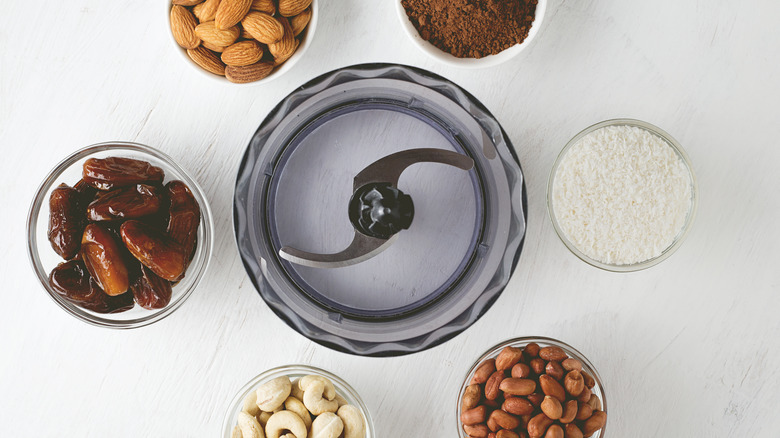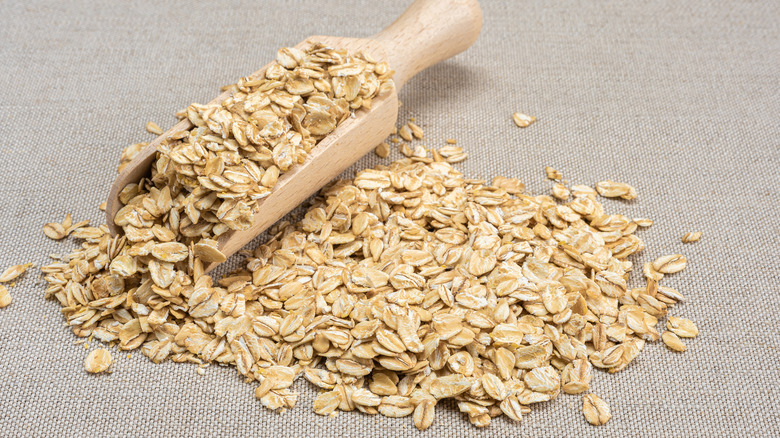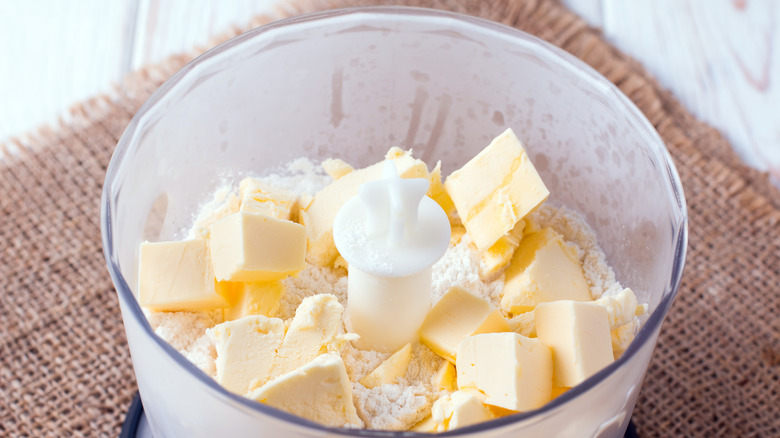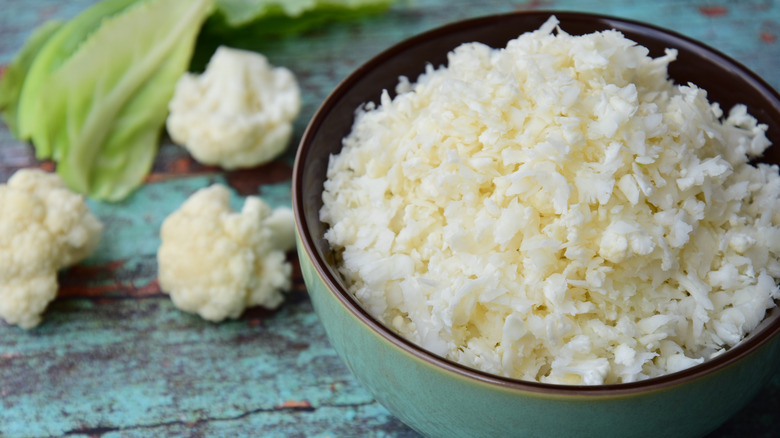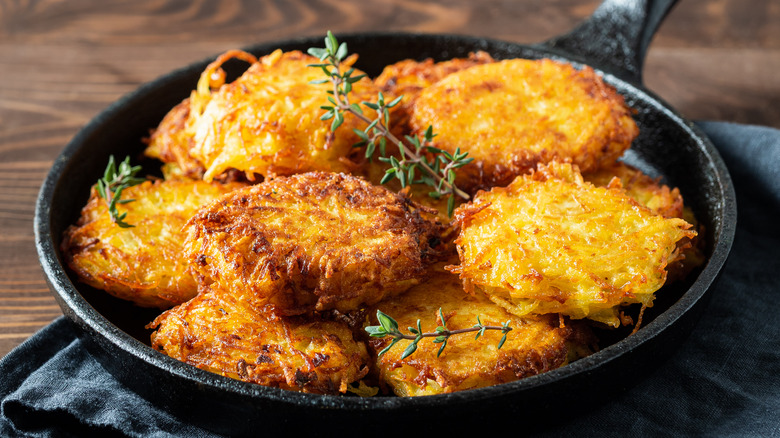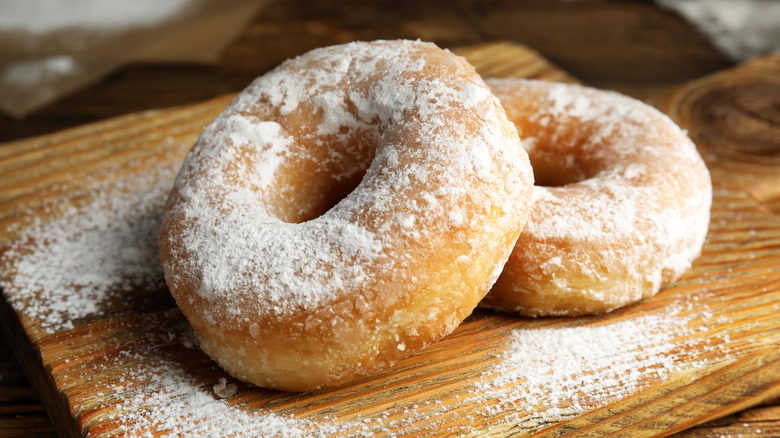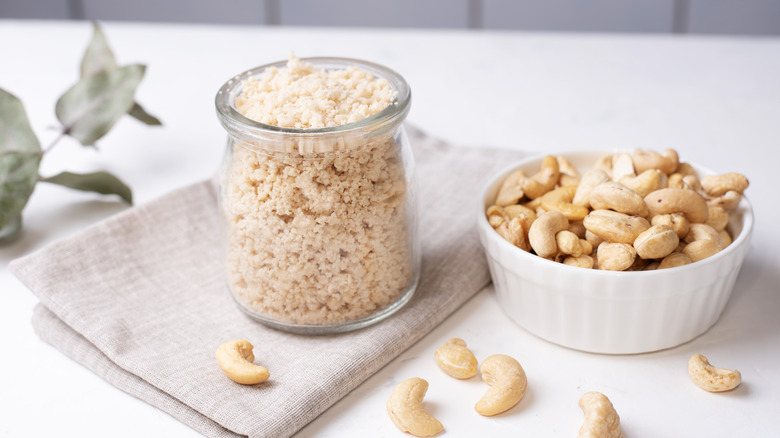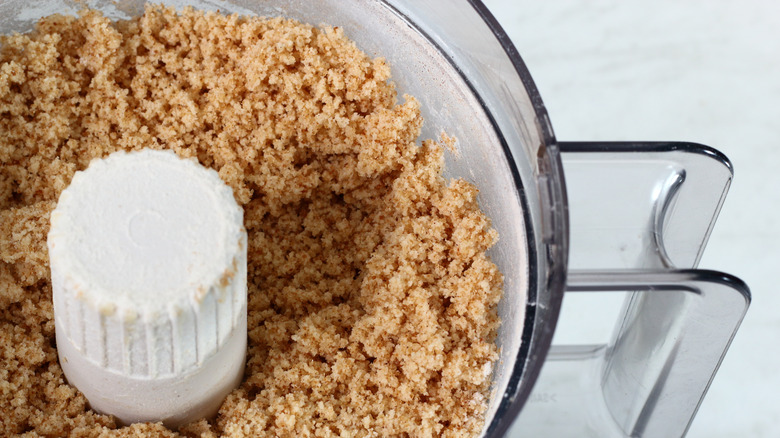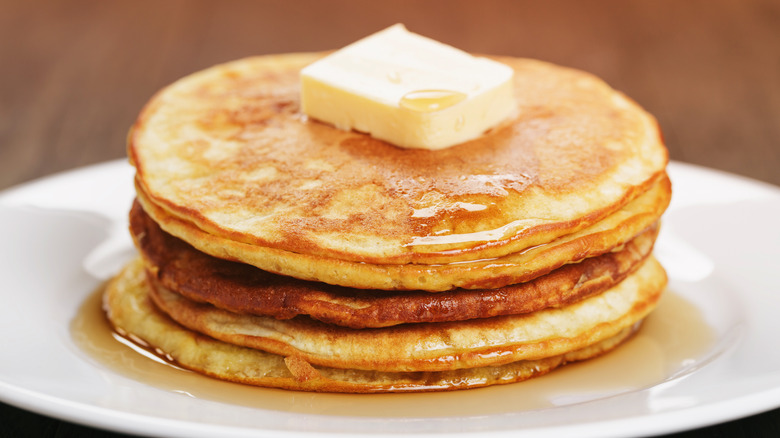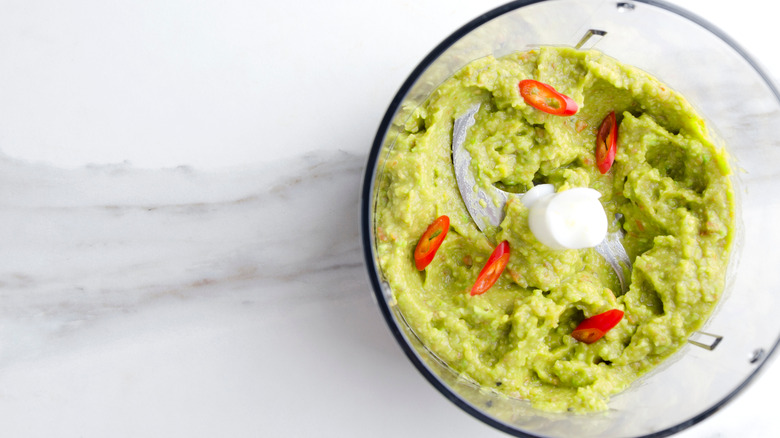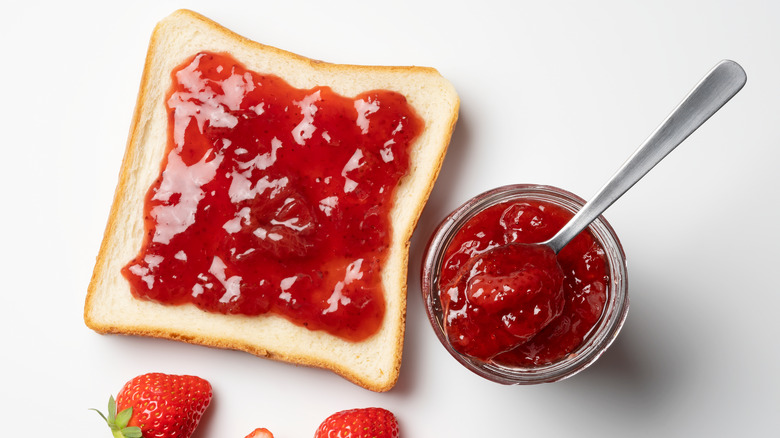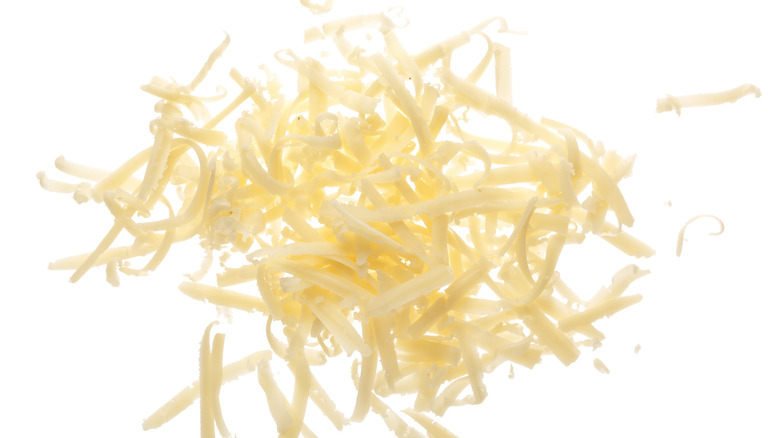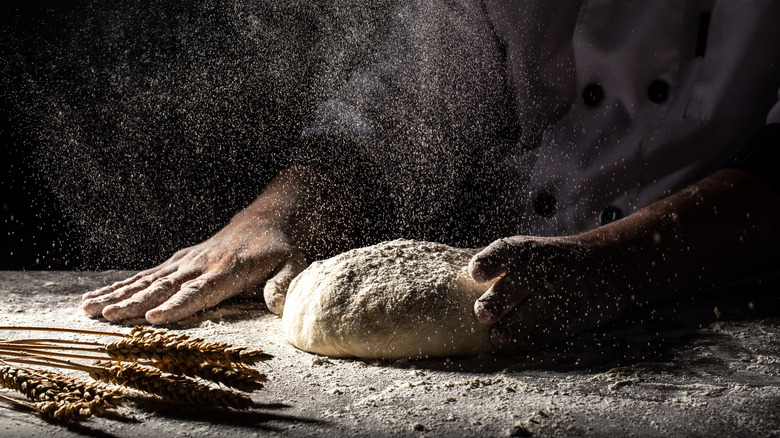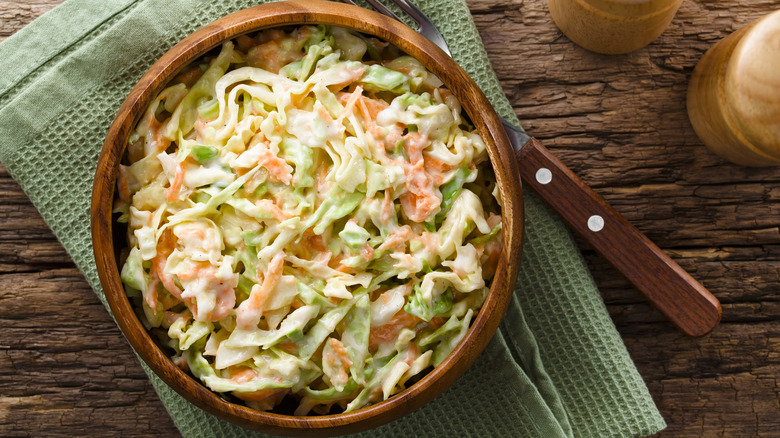The Absolute Best Uses For Your Food Processor
We may receive a commission on purchases made from links.
Food processors are one of the most inexpensive, yet useful, tabletop appliances a home cook can own. The small machine, as we know it today, was popularized by American engineer and cooking fanatic Carl Sontheimer (via MIT). Although Sontheimer built navigational equipment for the American mission to land on the moon, he is most well known for developing a food processor suited for the home kitchen. In 1973, the Cuisinart debuted to an American audience and promised a blending, chopping, pureeing, kneading, and mixing experience like no other household machine could provide. Nearly 50 years later, the modern blender & food processor market is worth almost $1.2 billion (via IBIS World).
So why are so many people food processor fans? To start, unlike other appliances like blenders and immersion blenders, the shape of a food processor allows all the ingredients to be uniformly chopped, evenly incorporated, or perfectly smooth. This allows the home cook to easily scale recipes and cut back their preparation time on recipes. Plus, removing the blade on a food processor makes scraping and cleaning up easy.
If you have a food processor collecting dust, now is the time to pull it out and put it to use. Here are some of the best ways to get the most out of your food processor.
Make inexpensive oat flour
Alternative baking has come to the forefront of the American culinary scene in recent years. That includes the emergence of oat flour. This gluten-free flour substitute has a fibrous, bulky consistency that mimics the glutenous qualities of traditional wheat flour. According to Verywell Fit, it offers numerous nutritional benefits including high fiber and protein as well as an assortment of vitamins and minerals. It's no surprise that brands such as Quaker and Bob's Red Mill have taken advantage of the rise of oat flour.
If your local grocery store doesn't carry oat flour, not to worry. It's easy to make your own batch with a food processor and a package of plain oats. Simply pulse your oats for around a minute and then process them for an additional 2 to 3 minutes until they're reduced to a very fine powder (via Cooking Canuck). This wheat flour substitute can be used in homemade protein bars, gluten-free pancakes, or holiday baked goods. Stored in a sealed container, oat flour will keep for months.
Step up your nut butter game
Nut butter is a customizable snacking staple. Although peanut butter and almond butter are some of the more well-known options, making your own nut butter in a food processor opens the door to other nutty creations like macadamia butter, pistachio butter, or cashew butter.
For homemade nut butter, simply add nuts and any desired flavors to a high-speed food processor. Nuts can either be raw, such as those found in bulk bins at a grocery store, or roasted. For almond butter, The New York Times suggests pureeing the nuts skin-on to increase the flavor complexity.
Regardless of which nuts you choose, blend them until super smooth for a creamy butter, or keep it short and choppy if you prefer your butter chunky. Nut butter makes an excellent addition to toasts, spreads, or snack time. For a savory twist, add rosemary, garlic, everything-bagel seasoning, or smoked salts to your food processor. Feeling sweet? Try to blend in cinnamon, sugar, or maple syrup.
Assemble a stress-free pie crust
Say goodbye to store-bought crusts! Food processors are a great tool to disperse fat evenly in flour for a flaky crust. Plus, the need for a pastry cutter is obsolete with the ease of a machine. To make pie crust at home, Completely Delicious recommends pulsing flour, fat (such as butter, lard, or shortening), and salt together until crumbly. Slowly add chilled water and pulse until the crust solidifies into a ball. It is easy to remove the food processor blade and place the dough in the fridge to chill.
The key to a good pie crust is to minimize exposure to heat while the dough is formed and to avoid move-mixing or over-handling the dough. According to King Arthur Baking Company, when heat (which can be transferred from a baker's hands) is applied to the dough, the butter may warm and leach from the dough. The speed of a food processor blade allows both the butter to remain chunky and the baker to have more time to chill the dough before baking.
Go DIY with cauliflower rice
Over the last few years, cauliflower rice has risen to the ranks of supermarket staple. Not only does it act as a canvas for whatever flavors it is presented with, but the low-calorie and carb side also offers numerous benefits for the body including providing plenty of fiber as well as calcium to boost bone strength and encouraging healthy digestion (via WebMD).
Skip the frozen package and make cauliflower rice at home by simply placing small cauliflower florets, stems removed, into a food processor and pulsing until crumbly. The variable speeds of the food processor allow the home cook to choose a setting for the desired rice texture. Cauliflower rice can be flavored with a variety of different spices to fit different cuisines. Our cauliflower rice risotto recipe pairs the freshness of cauliflower with the creaminess of coconut milk. For a grown-up, grain-free alternative to traditional couscous, try our recipe for cauliflower couscous with green olives and almonds. Just remember to blanch your cauliflower after its been pulsed.
Enjoy latkes all year round
Latkes, otherwise known as potato pancakes, are a common food in European cuisines and holidays. According to The Atlantic, latkes date back to 1300s and have been a fixture in Jewish culture, particularly during Hanukkah, ever since. Fried until golden-brown perfection, they can be served plain, paired alongside breakfast foods like eggs, sausage, and bacon, or even topped with sour cream and caviar if you're feeling fancy.
For the perfect latkes, follow chef Ilan Hall's potato pancake recipe. Add a grating blade to the food processor and slowly insert potatoes that have been peeled, soaked, and dried inside the machine along with peeled sweet onions. After grating, use a clean kitchen towel or cheesecloth to drain as much water from the grated potatoes as much as possible — it may take several towels! This will prevent the potatoes from denigrating once placed in the hot oil. Form patties and freeze on a baking sheet for 30 minutes, then start frying. Follow Chef Hall's lead and upgrade the traditional applesauce side by adding some smoke to the mix.
Powder your sugar in seconds
Run out of powdered sugar (also known as confectionery sugar) for garnishing freshly baked brownies? There's no need to fear when you have a food processor near! Unlike blenders, the shape and speed of the food processor ensures that the crystal structure of the coarse granulated sugar is broken down into very fine sugar. Use your homemade powdered sugar to place to top your freshly made cookies, brownies, pastries, and more. Looking for a way to make homemade desserts even fancier? Create household sugar stencils using scissors and parchment paper. Whether it's a complex snowflake or a simple whirl, using a stencil is an easy, artistic way to garnish your baked goods.
Although making powdered sugar from granulated sugar in a food processor is a quick fix, there are some occasions where this replacement won't work since confectionery sugar typically contains an anti-caking and shelf-stabilizing agent like cornstarch. For recipes where caking is detrimental, such as icing for piping a cake, simply add a touch of cornstarch.
Turn cashews into vegan cheese
Cashew cheese is a plant-based alternative to dairy-based cheeses. The texture is a bit runny and may not replace a hard cheese like cheddar but it can be baked into pasta or drizzled on pizza before it's baked. To make a vegan mozzarella alternative, start with raw cashews which offer a more nuanced flavor compared to roasted nuts. Sarah's Vegan Kitchen recommends soaking them for at least four hours (or for 30 minutes if you use boiling water in a rush). This will soften the cashews and make the next step in the food processor much easier. Drain the water from the cashews and add the softened nuts to your food processor.
According to Katie's Conscious Kitchen, the addition of arrowroot starch or cornstarch is vital in thickening cashew purees and giving the sauce its thick, cheese-like quality. All the ingredients can then be blended to create a smooth, creamy sauce. Use nutritional yeast to provide a cheese-like quality and mimic the deep flavor of dairy cheese. For lasagna or a toast topper, create a vegan ricotta cashew cheese by blending the nuts, lemon juice, and nutritional yeast to a fluffy consistency.
Transform stale bread into breadcrumbs
Making breadcrumbs at home is an easy way to modify sodium intake in foods that would be otherwise purchased at a grocery store. Add stale or toasted bread to your food processor with salt, pepper, garlic powder, and Italian seasonings and pulse until fine. These breadcrumbs also open up a pathway for fresh spices to make their way from the garden into the kitchen. Substitute fresh rosemary or parsley for their dried counterparts for a fresh twist on these breadcrumbs.
Use these food processor breadcrumbs for an extra special baked crusted chicken or fish. Prepared with Italian seasoning and fresh herbs, they make a great complement to mac & cheese. You can even leave them chunky for a twist on a salad crouton. Breadcrumbs can be stored in the freezer for up to a few months; this will prevent moisture from soaking the breadcrumbs and making them soggy.
Whip up pancake and waffle batter that doesn't clump
There's possibly no worse feeling than making pancakes in the morning and watching a clump of floury batter hit the pan and splatter into an unappealing pile. Preparing homemade batter in a food processor will eliminate that problem by evenly distributing dry and wet ingredients.
A common mistake when cooking pancakes is over-mixing the batter, as gluten will form in the flour and make the pancakes rubbery. In a food processor, the best strategy is to pulse the mix together to find the perfect texture and then leave it alone until ready to cook. For a summery twist on pancakes, stir in fresh strawberries or blueberries to the batter after it is pulsed.
Condiment squeeze jars can also be a valuable tool in clean pancake-making; simply fill a jar with batter and design away. The squeeze jar hack is perfect for making pancakes with kids — just without the mess.
Blend guacamole for a crowd
Mashing avocados with those spicy and delicious add-ins for guacamole can be a bit of a workout. Thankfully, using a food processor makes preparing the dip easy. Start by adding onions, jalapeños, and cilantro to your blender and pulse until fine; this prevents the arduous task of finely chopping everything for the guacamole! Then, add avocados and pulse to create the desired texture. Adding cumin, garlic, and lime juice can boost the flavor profile of guacamole as well. Take your guac to another level with the addition of pineapple chunks, tomatillos, or corn.
Guacamole is one of the most versatile foods in a kitchen. It can be served with sliced cucumber, peppers, and carrots or with tortilla chips. For a breakfast twist, try scooping it on hash browns or atop eggs.
Want to keep your guacamole from turning brown? Just add a bit of water on top to slow the oxidation process.
Prepare spreadable granola in under five minutes
Granola is a common pantry staple, but did you know it can be made smooth and spreadable with a food processor? The deep shape of the appliance maximizes the surface area and efficiently denigrates even the crunchiest granola into a fine powder that can be used to create granola butter.
This tasty nut butter alternative is a breeze to make. Combine packaged granola, neutral oil (like avocado oil or vegetable oil), and spices like cinnamon and nutmeg. A mostly-oat granola, such as Kind Almond Butter Clusters, blends smoother than granola that is packed with dried fruits and nuts. Process the granola mix until creamy; keep in mind that more oil may be necessary to make the texture silky enough to spread. Granola butter is the perfect breakfast spread for toast, rice cakes, or pancakes, and it also pairs well with sliced apples or bananas.
Make fruit spreads for breakfasts or snacks
Summer fruits like raspberries, blueberries, and strawberries always find their way into the kitchen. With a food processor, making a simple fruit spread for toasts, sandwiches, or charcuterie boards is easy. Add desired de-stemmed fruits to a food processor and process at a high speed until soft and spreadable. Mix and match fruits to create the perfect blend of flavors.
Kids of all ages love fruit spreads on sandwiches — especially when paired with a chocolate hazelnut spread. Kenarry recommends kid-friendly lunch cutouts that make eating fun! All fruit spreads are especially delicious on a summery bowl of vanilla ice cream or atop a slice of cheesecake. If you're hosting a party, a add it to a cheeseboard with a selection of crackers, cheeses, and fruits. For an easy weeknight "strawberry shortcake," scoop strawberry spread on biscuits and serve with whipped cream. The possibilities for this simple recipe are endless!
Grate cheese without the fear of injury
A mistake often made when cooking with cheese is not grating it yourself. By taking matters into your own hands, you'll avoid the preservatives and other unwanted ingredients which are included in the packaged variety. And with a food processor, you can make grated cheese at home without even thinking about a box grater. Using a food processor will prevent grated cheese from sticking. It is also a safer option; slicing fingers on a sharp box grater isn't fun for anyone!
Almost all food processors come with a grating disc to fit on top of the bowl. The attachment allows the user to feed cheese into the machine as the processor shreds. For a chunkier texture, try omitting the grating disc and adding small chunks of cheese to the processor, then pulse until your desired texture is reached. Sprinkle freshly grated Parmesan on a warm bowl of pasta or shredded mozzarella onto a homemade pizza.
Knead dough for fresh baked bread
Kneading bread dough is one of the most important steps in bread-making. The process connects several proteins within the bread to form strands. The movement of the flour and yeast particles within the bread also creates air pockets within the bread; these pockets give properly-kneaded bread its light, airy quality. To knead bread in a food processor, America's Test Kitchen recommends combining wet ingredients and adding them to the dry ingredients in the food processor. After less than a minute (or when the dough resembles an elastic ball), turn it out on a floured surface and knead for another seconds.
Too much kneading, however, can be detrimental to the dough. Perfectly kneaded dough should have a subtle stretch and spring back when poked with a finger. The baker should also be able to stretch the dough without it breaking. Over-kneaded dough will resist being stretched and come out tough when baked.
Shred vegetables for coleslaw
Coleslaw is typically a side dish that combines a shredded vegetable, salt, dressing, and oil. Recipes often call for using a box grater, but that process can be messy, tiring, and time-consuming. Using a food processor, however, will ensure that making coleslaw for a crowd is an easy task. Simply add a grating blade attachment to your food processor and add cabbage to the machine — no box grater involved. Clean-up with a food processor is easy since the blade comes right out of the machine, and the fineness of the grating can be easily altered to accommodate a range of vegetables.
Coleslaw recipes cover a wide variety of global influences from Asia to a California-inspired version made with fennel bulbs, grapefruit, almonds, and Napa cabbage. For a colorful take on the classic side, consider a carrot slaw recipe. A Brussel sprouts slaw with pecans, cranberries, and shallots will offer plenty of fresh flavors. Whatever way you like your coleslaw, make it happen with your food processor.
